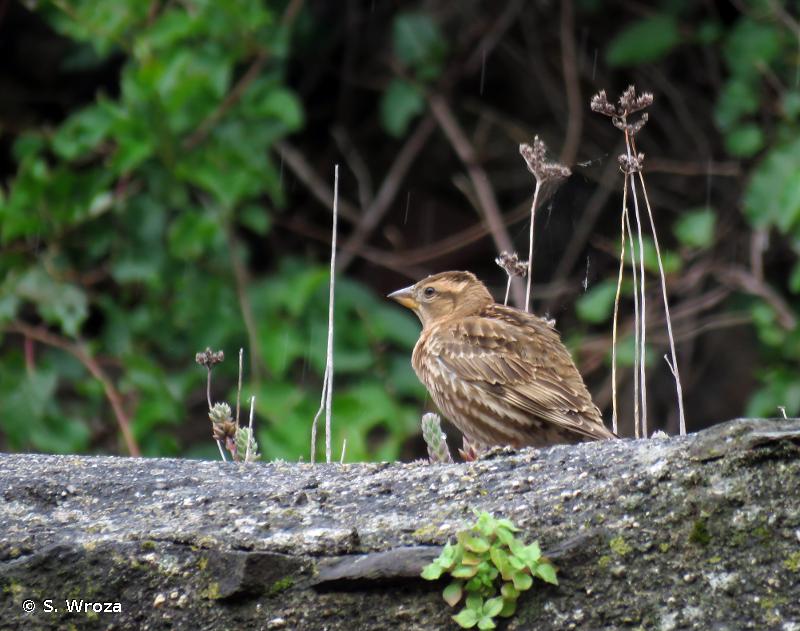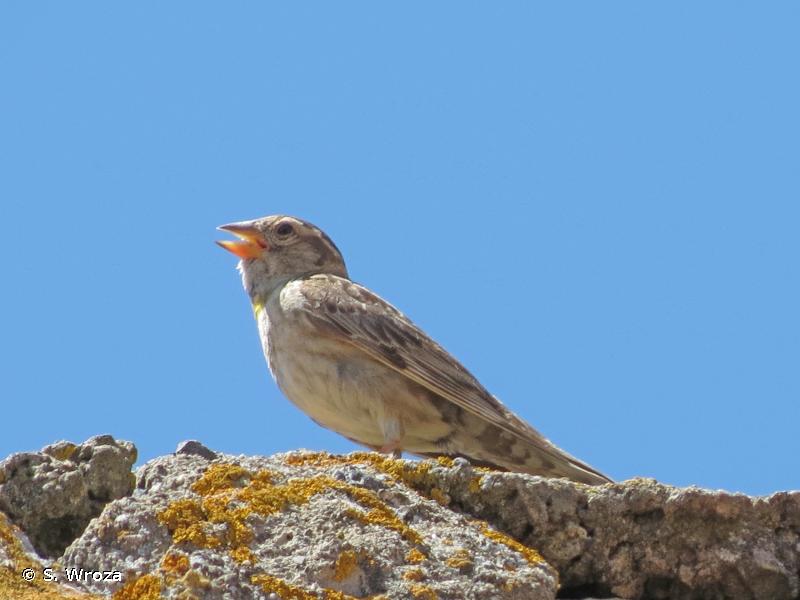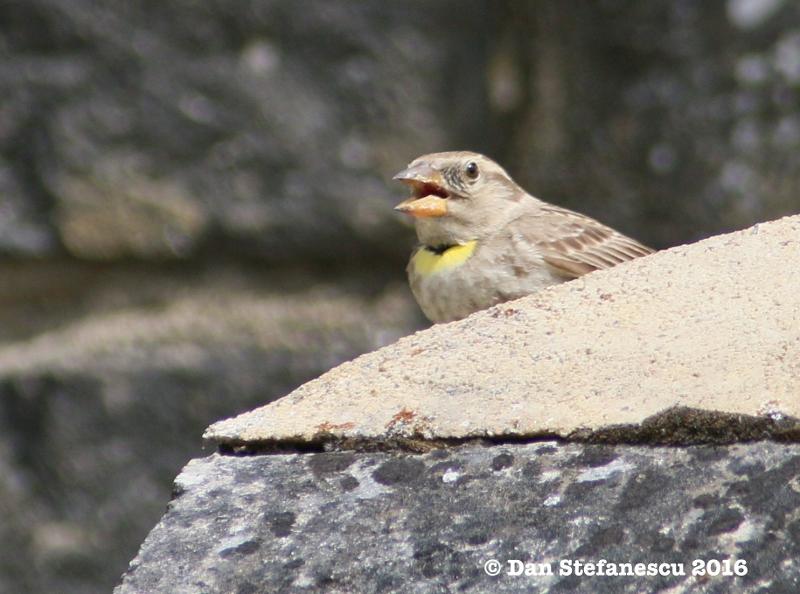
cd_nom

| Author : S. Wroza |
 |
Despite the Creative Commons license, please inform the author of the use which will be made of his photo

| Author : S. Wroza |
 |
Despite the Creative Commons license, please inform the author of the use which will be made of his photo

 |
To get the picture, please visit:
Dan Stefanescu
email : inpn@mnhn.fr
Any reuse of one or more photographs on this site is subject to an authorization request from the author.
Link to the Code of Intellectual Property (Legifrance)
Taille/poids :
Longueur totale : 15 à 17 cm. Poids : 28 à 32 g.
Diagnose :
Le Moineau soulcie est de tous les moineaux français le plus grand. Il apparaît massif avec une large tête et un gros bec couleur chair. Le dessus du corps brun chamois est marqué de rayures sombres. La face ventrale est beaucoup plus claire. L'espèce se distingue des autres moineaux par la présence d'une calotte rayée et d'un large sourcil clair. Sous la gorge, les adultes possèdent une tache jaune plus ou moins visible. En vol, lorsque cet oiseau déploie sa queue, on peut observer une large barre terminale blanche.
Détermination :
Moyennement difficile.
Espèces proches :
Des confusions sont possibles avec le Moineau domestique Passer domesticus femelle et le Bruant proyer Emberiza calandra. Le Moineau soulcie est la seule de ces espèces à posséder un sourcil clair aussi marqué et une barre terminale blanche à la queue.
Période d'observation :
Principalement sédentaire, l'espèce peut être observée toute l'année.
Biologie-éthologie :
En période de reproduction, insectes (notamment orthoptères et lépidoptères) et autres arthropodes constituent la base de l'alimentation. Le reste de l'année l'espèce consomme également des graines et des baies.
Biogéographie et écologie :
Le Moineau soulcie est distribué à travers le Paléarctique au niveau des 40° de latitude, de l'Espagne à la Mongolie. L'espèce est susceptible d'occuper plusieurs types d'habitats qui se caractérisent par l'association d'une architecture traditionnelle et d'une agriculture semi intensive.
Compilé par J. Comolet-Tirman à partir des Cahiers d’habitats.(UMS 2006 Patrimoine Naturel (AFB / CNRS / MNHN)),2017
Continental
Metropolitan France
Overseas
Marine
Metropolitan France
Overseas
The map presents a summary at the 10 x 10 km grid of the observation data for the species transmitted to the SINP. These data have been subjected to validation filters.
The map presents a reference distribution layer of the species at the scale of departments and marine sectors. The presence and absence data were established by expertise within a network of partners. This reference distribution is used in the validation process of the SINP data at the INPN level.
Corresponds to a report on the basis of at least one observation proved within a period of 10 years (20 years for little-known invertebrates) preceding the year and no presumption of extinction since obtaining the last data nor doubt on reproductive and implemented nature of this population. For migratory species, the presence indicated concerns areas of reproduction.
This status is based on one or more of the following criteria:
This point covers the absence, more difficult by nature to demonstrate than presence. This status is based on one or more of the following criteria:
This status must be assigned to a department in which the presence of the species is casual.
Particular case of absence due to a proven extinction less than a half century ago (older disappearances are treated as "no probable or definite").
In the state of knowledge, we can not comment on the presence or absence in the current department. This is the default status when not comprised in one of the previous categories or whenever there is doubt.
The map shows the global distribution of the species based on GBIF data (Global Biodiversity Information Facility).
